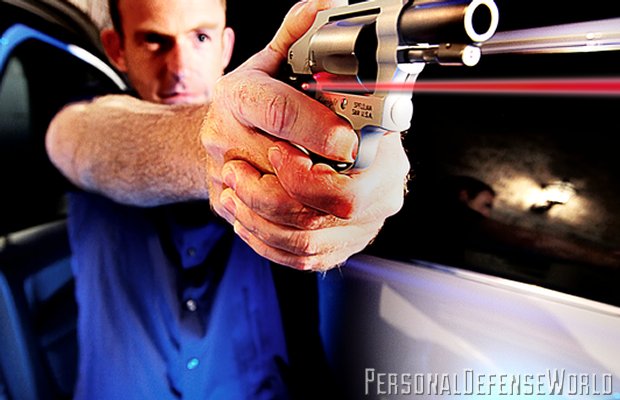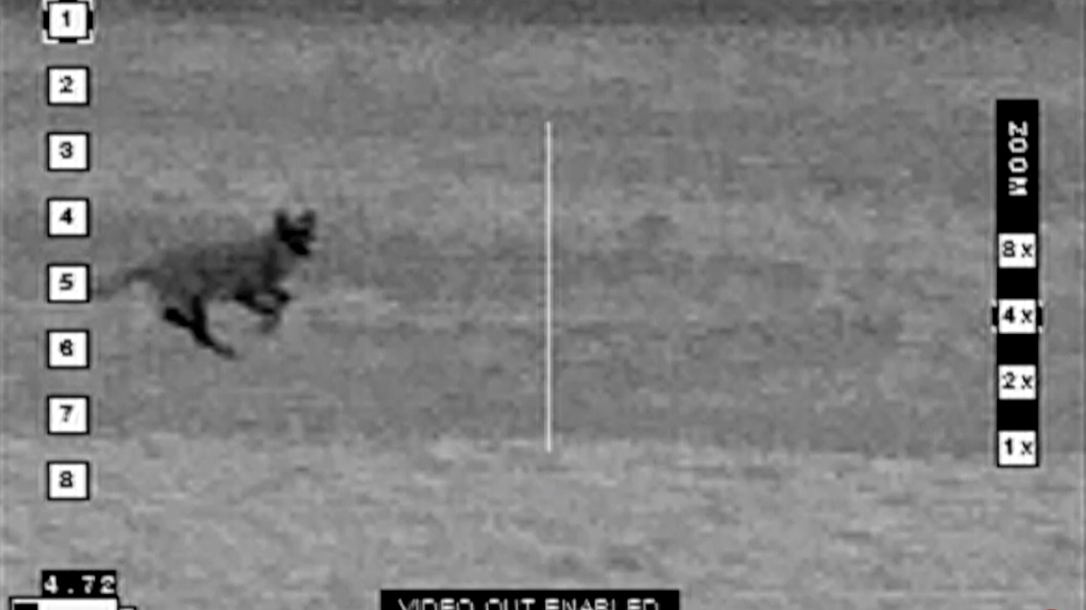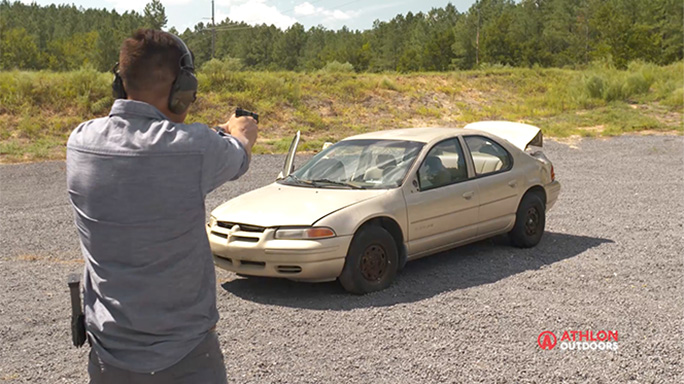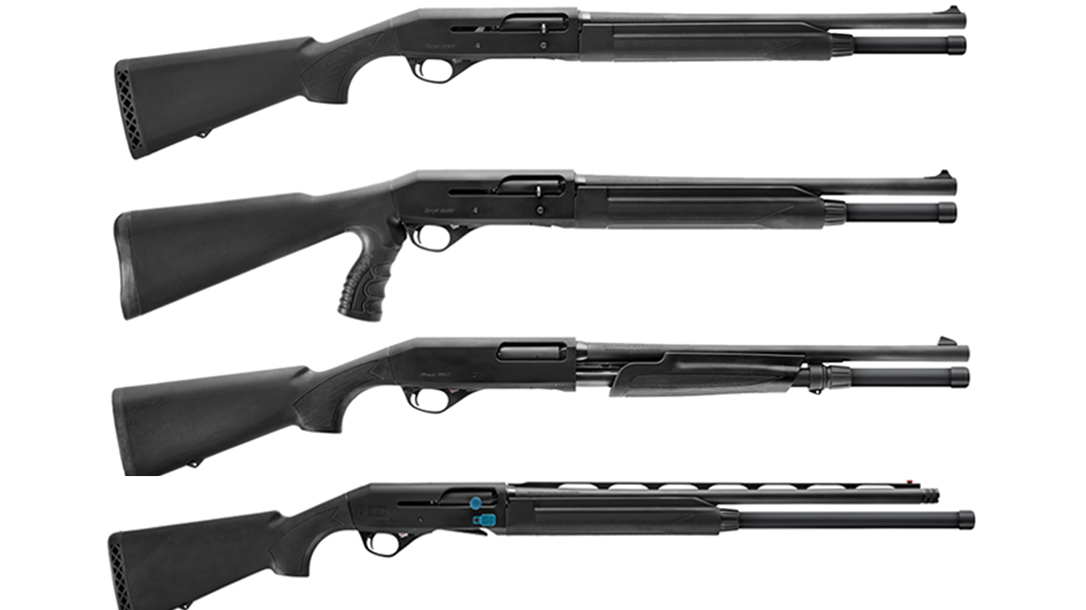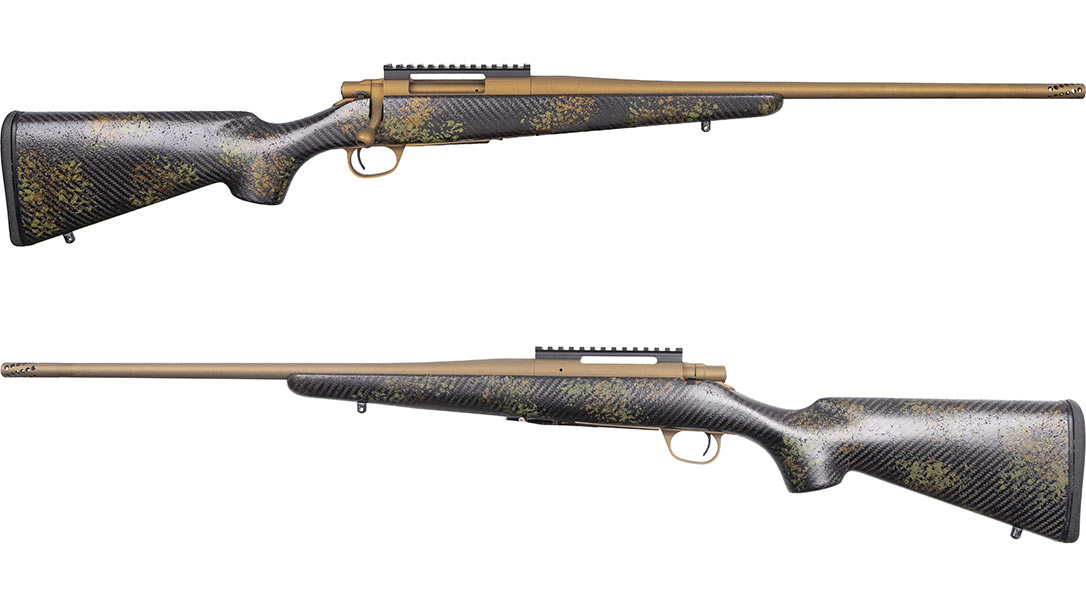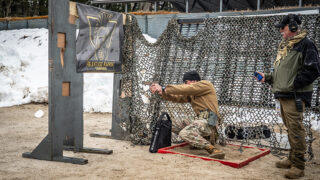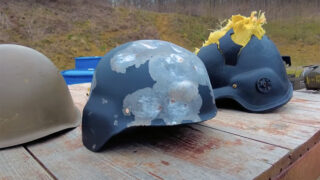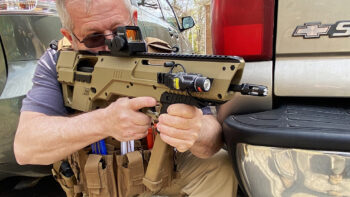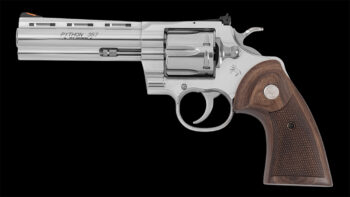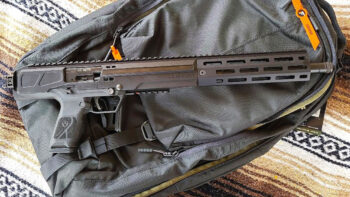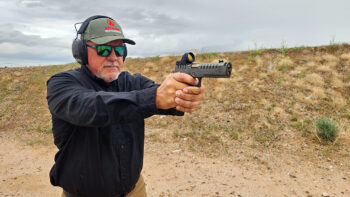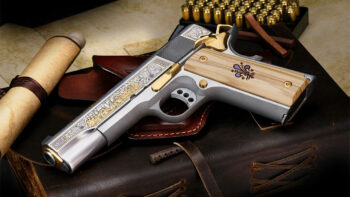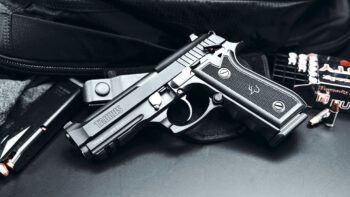I’m not sure where the term “aim for the center of mass” came from in the world of defensive shooting. It had already been in common use for a long time when I came along, and I’m pretty old. But however ancient the advice is, there are those of us who believe it is obsolete.
It’s generally understood that a “center of mass” (COM) hit means that you’ve landed a bullet somewhere in the trunk or torso of the humanoid threat. But where exactly is that center? And of what particular “mass?”
If you (or the person you’re teaching) should perceive center of mass to be the center of the human body standing vertically, well, we’re probably looking at a “gut shot.” Historically, these tend to be highly lethal in the long term, but death is often delayed for many days. The purpose of firing is not to kill a man with a slow-acting bullet wound — it is to make that person stop his violent attack immediately, irrespective of whether or not he dies subsequently from the injuries you inflict upon him.
Perhaps we can say, “Uh, I didn’t mean center of mass on the whole body! I meant center of torso mass! Yeah, that’s it!” Well, even though much of the lower torso extends below the beltline, a lot of people interpret “torso mass” to mean collarbone to navel. This puts the center in the upper abdomen, but still in the abdomen. The bullet may well be lethal, but not necessarily instantly so.
Talk to experts in Tactical Anatomy, such as Dr. Jim Williams, who wrote the highly acclaimed book of that title. Dr. Williams is a gunshot wound survivor himself, and as an emergency room physician, he has treated a great many gunshot wounds in others. Cross-trained in combat shooting and the use of lethal force as a sworn police officer and police surgeon, Williams also understands what it takes to deliver “surgical accuracy” from a handgun in a fast-breaking life-or-death situation where the assailant has to be stopped immediately to keep him from crippling or killing the shooter or some other innocent person. Williams is a competitive shooter who has won state championship titles shooting the service type handgun.
Williams, and other experts with his level of medical knowledge, recommend a point of aim that centers on the heart. Basically, you are aiming at the point where you would apply pressure if performing CPR. From a square-on frontal angle, this can create a wound track that damages both heart and thoracic spine, an injury likely to result in rapid incapacitation. A bullet that’s misplaced a bit high can still hit aorta or thoracic spine. A few inches off to either side still at least gets a lung hit and may cut a pulmonary artery, and low left or right can produce massive hemorrhage in liver or spleen. Low center may put the bullet through the diaphragm, robbing the opponent of his ability to breath, and may reach mid-spine to drop him in his tracks.
The cardiac point of aim therefore gives the greatest likelihood of a stopping hit, given the fact that we know marksmanship degrades under stress for several reasons. However, we all have to remember that while instant one-shot stops sometimes occur from heart shots, sometimes they don’t.
The heart shot “works” by stopping the supply of oxygenated blood to the brain, resulting in unconsciousness. However, if the brain is fully oxygenated, even if the bullet has completely shut down cardiac function, the individual can “stay up and running,” performing conscious physical action, for fourteen or fifteen seconds or so. And, there is no guarantee that a gunshot wound to the heart will result in complete cessation of heartbeat.
Trauma doctors will tell you that there are a lot of former patients walking around who have survived being shot in the heart. Many of these wounds involved small caliber bullets, but there are cases where the round was something like 9mm ball or .38 Special. I’ve not personally run across a case of a human being surviving a .45 caliber gunshot wound through the heart, but I do know of one with a .357 Mag. She – yes, she! – responded by shooting her attacker twice through the chest with her 9mm Beretta. He turned to run, still pointing the gun dangerously, and she shot him two more times, killing him. She survived to become a role model instructor. Stacy Lim, LAPD, taught us all some lasting lessons that night.
Pelvic Shot
The pelvis is the cross-section of skeletal support. You can shoot a guy in the leg and he may still stay up, but if your bullet smashes the pelvic girdle – the big ring of bone that encompasses our hips – the body can no longer stay upright or ambulate, and the man you’ve shot will probably collapse within the next step he attempts to take. If you doubt that, ask any trauma surgeon or orthopedic surgeon.
In a famous gunfight in Baton Rouge, Louisiana many years ago, a violent felon attacked two police officers and managed to gain control of one cop’s service revolver. He shot her in the heart, and she fell, dying – the first female police officer to be murdered in the line of duty in the state of Louisiana. Her male partner entered an epic struggle with the cop-killer, shooting him nine times with .38 Special bullets. Yes, he had to reload during the fight, and was seriously injured himself. An award winning competitive police combat shooter, he hit the cop-killer with every shot he fired, most of them center-mass. One of his bullets, aimed intentionally at the killer’s head, opened up his skull and exposed brain matter…and the man got up from the floor and kept fighting.
At the end, the embattled cop, Officer Steve Chaney, fired his tenth shot into the man’s pelvis, and the manic cop-killer dropped like the proverbial rock. Unable to regain his feet, he bled out and died on a carpet saturated with his life’s blood. Chaney would say later that the shot to the “hip-bone” was the only one that kept the murderer down…and ended the terrible death battle.
History shows that the pelvic shot tends to immobilize the recipient of the wound, so long as a serious fracture occurs in the pelvic girdle. That area of the body also encompasses some major blood vessels and “nerve centers.” Men hit with bullets from powerful guns in this area of the body tend to fall to the ground, often “jack-knifing” – doubling over – as they go down. Survivors of these wounds often describe excruciating, debilitating pain, and inability to stand after sustaining the injury.
In the 1960s, NYPD created the famed Stakeout Squad, a group of 30-some hand-picked marksmen who were placed in robbery-prone places of business, or locations where detectives had gotten tips that a robbery was going to go down. The duty handgun round at that time was the 158-grain solid (non-expanding) .38 Special bullet at standard pressure, which meant relatively low velocity. The Stakeout people went to famed pathologist Vincent DiMaio, Sr., then the chief medical examiner for the city of New York. (His son, Vincent DiMaio, Jr., would later become the chief ME of Bexar County, Texas, and write the authoritative forensic text titled “Gunshot Wounds.”) Dr. DiMaio, Sr. told the squad that their best chance of dropping a man in his tracks, if they could not guarantee the difficult task of a deep brain shot, was to shoot him in the pelvis.
The Stakeout cops took him seriously. Of the three Stakeout Squad members who amassed the largest number of shootings in the controversial history of the unit, one shot so many men in the pelvis that he earned the nickname “The Proctologist,” because as one member of the squad put it, “Everybody he shot in the ass hit the ground.”
Obviously, that officer was not aiming for the gluteus maximus, the muscle structure of the buttocks where children were traditionally spanked because it would hurt but wouldn’t injure; he was aiming for the pelvic girdle, which also encompassed the coccyx, the “tailbone” of the spine.
Deep Brain Shot
There is much bad advice out there about where to specifically aim a shot to a lethal opponent’s brain cavity. It’s not just a “head shot.” Much of the human head does not contain vital areas. I know one officer who was shot in the chin at point-blank range with a 230-grain .45 ACP hardball round, on course to his brain stem. However, the bullet glanced off the heavy, curvilinear bone of his lower mandible (jaw), and took a path safely away from the part of his body “where he lived.” To make a long story short, that officer – shot seven times total with a .45 – shot back with his Glock .40 and nailed his assailant seven times in return. The last three 180-grain jacketed hollow point police bullets hit the head, one tearing through the brain and leaving the would-be cop-killer dead on the ground. The officer has since recovered, after many surgeries, and returned to full duty status. I’ve had the privilege of shooting pistol matches with him since. (He’s a helluva good shot. “It’s all in the motivation.”)
Some of the prevalent bad advice includes, “Shoot him between the horns!” A famous instructor, no longer with us, advised to aim for the center of the forehead. Gun-wise physicians, including neurologists and neurosurgeons with whom I’ve discussed this disagree emphatically. They will tell you that this part of the head is in front of the upper brain, and a hit there can trigger what they colloquially call “an electrical storm in the nervous system.” That is, the body will tend to tighten its muscles spasmodically when the brain is injured here.
This is why we see people shot in the upper brain sometimes appear to stiffen, stand up on tiptoes, then topple over: the strongest muscles in the legs are the anti-gravity muscles, and when they spasmodically tighten, that “up on tiptoes effect” is the result.
When you’re under fire from someone trying to kill you, his standing on tiptoes won’t make or break your survival. What does matter is, if he is pointing his gun at a hostage and has his finger on the trigger, a shot to upper brain may well cause him to reflexively fire the gun! This is because, as those muscles tighten throughout the body at the instant he receives the wound, the flexor muscles of the fingers are stronger than the extensor muscles.
Carlos Hathcock, the National Rifle Champion who went on to become the most famous Marine Scout-Sniper of the war in Vietnam, well understood this. In Charles Henderson’s biography of Hathcock, Marine Sniper, you can read of a case where Hathcock saw an enemy soldier pointing a 7.62x39mm rifle at American lines. Hathcock threw his scoped bolt-action to his shoulder and cracked off a shot as soon as his crosshairs intersected the enemy soldier’s head. At the moment the bullet hit the man in the brain, he reflexively fired his rifle. Fortunately, he did not hit anyone. The brain-shot man then staggered several yards, like a zombie, before he collapsed. Forever after, including his second career training American police SWAT snipers, Hathcock emphasized the importance of shooting the bad guy lower in the head – in deep brain.
Even the famous “between the eyes” shot may hit too high – at least if the killer’s head is erect as you sight your gun on him – to keep him from firing a reflexive, deadly shot when he is hit. Study of anatomy shows us that if the head is erect, the deep brain area – the pons and the medulla oblongata – will be situated behind the nose if the killer is facing the shooter who is firing the rescue shot. The nasal cavity, unlike much of the rest of the skull – and remember, doctors call it the “cranial vault” for good reason – is not likely to cause the bullet to ricochet. There is only soft, honeycombed sinus material between the bullet and the part of the murderer’s brain that you have to short-circuit to rescue the victim.
External Anatomic Landmarks
Surgeons use markers to draw lines and spots where they will insert the scalpel as the operation begins. The term they use is “external anatomic landmarks.” This means the spot on the outside of the body that aligns with the spot inside the body where external intervention needs to take place.
For the surgeon, that landmark “marks the spot” where the “benevolent knife” will begin the surgery that will heal the sick. For the armed rescuer, it marks the point where the rescuing bullet must enter a malignant human being’s body to shut down the organism and render it incapable of killing or crippling other, innocent human beings.
For the head, picture a headband pulled down over the ears, and now wrapped around those ears, and the nose, and in the back, the occipital protuberance, that bump you can reach up now and feel at the base of your skull. With the head erect, that will guide the bullet into the brainstem and turn off the human being with instant collapse. While lesser mammals may convulse with “post-agonal response” – what the layman calls “death throes” – from such an injury, the more sensitive and highly evolved human simply collapses from with totally relaxed muscles. It happens instantaneously. This is why Hathcock, and the master snipers in both the police and military worlds, followed his advice to aim there.
If the head is thrown back as the attacker looms over the victim who is about to fire in self-defense, the orientation of the external anatomic landmarks vis-à-vis the underlying deep brain changes. Now you would be wiser to aim your bullet through the open mouth, or under the chin if the mouth is closed, to lace it into primal brain. And if the opponent is facing you with his head bent forward in the frequently seen body posture of aggressive assault, now the “between the eyes” aiming point, sometimes called “the Lone Ranger Mask” or the “cranio-ocular shot,” will now be perfectly in line with deep, primal brain.
For “body work,” forget that nebulous “center mass” terminology. You are aiming for the heart, and from the front, heart into spine. Between the nipples is the aiming point on an erect human torso. If you are firing upward or your target is leaning backward, aim lower; if the target is bent forward in an aggressive “I’m coming to kill you” posture, set your sights lower to angle the shot upward and into the “fuel pump.”
Two friends of mine were involved in a cataclysmic gun battle with two violent, heavily armed robbers. The first perp, a very large man, fell into the smaller partner and knocked him down, his corpse atop him like a human sandbag. As the two officers poured fire into the threat, one had the presence of mind as he dropped his empty gun and reached for another loaded one to yell to his partner, “Bill, you’re hittin’ high!” In moments, the bullets had gone to the right place, and both gunmen were dead on the floor.
For decades now, I have taught my students that they should have a copy of the classic textbook Grey’s Anatomy on their bookshelf next to their firearms manuals. I remind them, as I remind you now, to memorize the diagrams until you can visualize the internal structures automatically from any angle.
As you study this topic, analyze whether the proponents of any given point of aim have actually studied gunfights in which people were shot in those parts of the body, or whether they are just reflexively parroting old training mantra of “center of mass” or “two in the body, one in the head.” In a recent internet forum discussion on this topic, some folks said, “The pelvis will be harder to hit than the heart.”
Dr. Jim Williams, the police surgeon and tactical anatomy expert cited earlier, recently told me he had calculated “the target area (in frontal plane) of the vulnerable bony area of the average (150 pounds) adult male pelvis as 110-square inches, and the vulnerable neurovascular area of the pelvis at 45 square inches, versus approximately 30 square inches for the high-chest (mediastinal) target zone (again, the frontal plane).”
Final Notes
Anyone who has studied this ugly discipline comes to the same conclusion: placement of the shot is more important than any other factor in stopping the threat posed by the homicidal human. Knowing your target is every bit as important as knowing your weapon. Headshots fail when the bullet doesn’t reach deep brain. “Center mass” shots fail when the bullet doesn’t reach vital internal structures. Pelvic shots fail when they don’t strike the actual pelvis with enough power to cause major fracture; prefragmented “frangible” bullets are notorious for this, as are round-nose bullets that ricochet off hard, curvilinear bone structures, just as they do with skull hits.
It is an ugly topic to have to discuss. But failing to stop a murderer who can be stopped with no other means but gunfire, is an even uglier and more unacceptable outcome.










